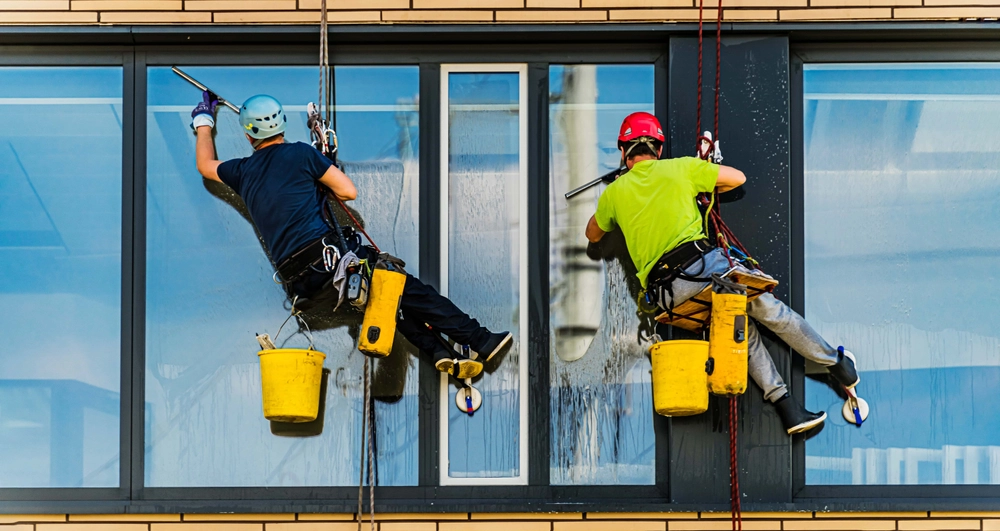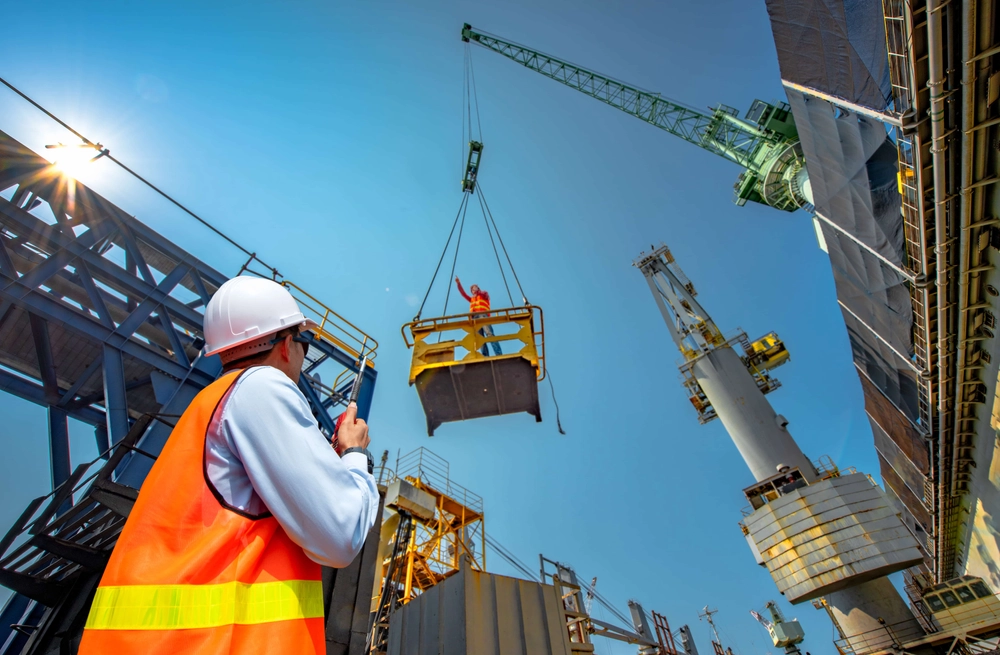The Impact of OSHA Regulations on Worker Safety: Mitigating Fall Risks on Construction Sites
 One of its main responsibilities is to develop and enforce regulations that reduce workplace hazards. Among others, such hazards include those associated with falls at construction sites.
One of its main responsibilities is to develop and enforce regulations that reduce workplace hazards. Among others, such hazards include those associated with falls at construction sites.
This blog post will explore the impact of OSHA regulations on worker safety, focusing on fall protection measures in the construction industry and the additional steps companies can take to mitigate fall risks.
The Prevalence of Fall-Related Injuries and Fatalities in Construction
According to the International Labor Organization, there are 340 million occupational accidents annually around the world. The accident rate is disproportionately high in the construction industry, while the most vulnerable include younger and older workers. While there are different causes of workplace accidents, falls are among the most common.
OSHA plays a crucial role in addressing this issue by setting standards for fall protection when working at heights and ensuring compliance through inspections, enforcement actions, and training programs. These efforts have contributed to the overall reduction of fall-related incidents in the construction sector.
Employers can enroll workers in various fall protection training courses such as the one provided by us. Click here to learn more about the learning outcomes and syllabus of the OSHA Competent Person for Fall Protection Training course.
OSHA's Fall Protection Regulations
OSHA's fall protection standards, outlined in 29 CFR 1926 Subpart M, mandate several key components to ensure worker safety on construction sites:
- Duty to Have Fall Protection: Employers must provide fall protection for workers exposed to fall hazards of six feet or more above a lower level. This requirement aims to minimize the risk of falls and the severity of injuries should a fall occur.
- Guardrail Systems: These barriers prevent workers from falling off elevated surfaces and must meet specific height, strength, and construction requirements. Properly installed guardrails provide a passive safety measure that requires minimal worker interaction, reducing the likelihood of errors and accidents.
- Safety Net Systems: Installed below work surfaces, safety nets catch falling workers and minimize the risk of injury. These systems must be positioned as close as possible to the work area and have sufficient strength to withstand the impact of a falling worker.
- Personal Fall Arrest Systems: Comprising harnesses, lanyards, and anchorage points, these systems arrest falls and distribute impact forces safely. Workers must be trained to use personal fall arrest systems correctly and inspect them regularly for signs of wear or damage.
- Other Fall Protection Measures: Additional measures include positioning device systems, warning line systems, and controlled access zones. Employers must evaluate their specific worksite conditions and implement the most appropriate fall protection methods.
OSHA also requires employers to provide comprehensive fall protection training for workers and supervisors to ensure proper understanding and application of these safety measures. This training should be updated regularly to reflect changes in regulations, equipment, and best practices.
Impact of OSHA's Regulations on Worker Safety
 The implementation of OSHA's fall protection regulations has brought about significant changes in the construction industry, including those mentioned below.
The implementation of OSHA's fall protection regulations has brought about significant changes in the construction industry, including those mentioned below.
Reduction in Fall-Related Injuries and Fatalities
OSHA regulations have led to a significant reduction in fall-related injuries and fatalities on construction sites.
By implementing stringent fall protection standards, the construction industry has witnessed a decrease in the number of accidents and near-misses. This improvement demonstrates the effectiveness of OSHA's regulatory framework in promoting a safer work environment and minimizing the risks associated with working at heights.
Improved Safety Culture within Construction Companies
As a result of OSHA's regulations, construction companies have become more proactive in developing and maintaining a strong safety culture.
Employers are now more focused on identifying and addressing potential hazards, fostering open communication with employees about safety concerns, and emphasizing the importance of adhering to safety protocols. This shift in mindset has led to a better understanding of the value of safety measures and their impact on worker well-being and overall company performance.
Increased Worker Confidence and Productivity
With the implementation of OSHA's fall protection regulations, workers have become more confident in their ability to perform tasks safely and efficiently. This confidence stems from the knowledge that their employers are taking the necessary precautions to protect them from fall-related hazards.
As a result, workers are more likely to follow safety procedures, report any unsafe conditions, and collaborate with their supervisors to ensure a safe work environment. Consequently, increased worker confidence contributes to higher productivity levels, as employees feel secure in their work and are less likely to experience accidents that can disrupt operations.
Enhanced Reputation and Industry Standards
The impact of OSHA regulations on worker safety has not only led to a decrease in injuries and fatalities but also improved the reputation of the construction industry as a whole.
By adhering to OSHA standards and promoting safe work practices, construction companies demonstrate their commitment to employee safety and the well-being of their workforce. This commitment enhances their reputation among clients, partners, and the public, leading to increased business opportunities and growth.
Furthermore, the implementation of OSHA regulations has raised industry standards by providing a benchmark for safety practices. Companies that go above and beyond these requirements can set themselves apart as leaders in workplace safety, inspiring other businesses to follow suit and strive for continuous improvement.
Economic Benefits of Improved Worker Safety
The reduction in fall-related injuries and fatalities due to OSHA regulations has positive economic implications for both individual construction companies and the industry as a whole. Fewer accidents mean lower workers' compensation costs, reduced legal expenses, and decreased downtime caused by injury investigations and recovery.
Companies that invest in worker safety can also experience higher employee retention rates, as workers are more likely to remain with organizations that prioritize their well-being. In turn, this can lead to lower recruitment and training costs, further contributing to a company's financial stability and success.
Challenges and Opportunities for Further Improvement
Despite the positive impact of OSHA regulations, there remain limitations that call for continuous improvement and innovation in fall protection measures. Emerging technologies and practices, such as drones for remote site inspections and virtual reality-based training, have the potential to further enhance worker safety.
Construction companies must also take responsibility for promoting safety beyond OSHA requirements, as this not only protects their employees but also benefits their overall operations. By proactively investing in advanced safety measures and equipment, businesses can reduce the risk of accidents and associated costs, such as workers' compensation claims, lost productivity, and legal expenses.
Additional Measures Companies Can Take to Mitigate Fall Risks
To further mitigate fall risks on construction sites, companies can implement the following measures:
Innovative Products and Solutions
Companies can explore innovative fall protection solutions like the Horizontal Lifeline System - EdgeFallProtection.com. This flexible and customizable system provides continuous fall protection for workers moving along elevated surfaces, significantly reducing the risk of falls. By adopting advanced technologies and industry best practices, companies can stay at the forefront of worker safety.
Site-Specific Fall Protection Plans
Customized plans account for unique hazards and conditions present at each construction site, ensuring the most effective safety measures are in place. These plans should be reviewed and updated regularly to accommodate changes in the work environment.
High-Quality Equipment and Regular Maintenance
Companies should invest in reliable fall protection equipment and perform routine inspections to ensure optimal functionality. This includes replacing worn or damaged equipment promptly to prevent accidents caused by equipment failure.
Worker Input on Safety Measures
Workers possess valuable insights into potential hazards and effective safety solutions. Encouraging their input can lead to improved safety measures and a sense of ownership and responsibility for workplace safety.
Continuous Training and Skill Development
Regularly updating training programs and providing resources for skill development can help workers stay informed and prepared for evolving safety requirements. This includes offering refresher courses, advanced training, and opportunities for professional development.
Conclusion
OSHA regulations have had a substantial impact on mitigating fall risks and improving worker safety on construction sites. However, the responsibility for enhancing safety measures does not rest solely with regulatory agencies. Construction companies must prioritize safety and continually seek opportunities to improve fall protection measures, both by adhering to OSHA standards and implementing additional safety practices.

 EN |
EN |  ES
ES






























































































































